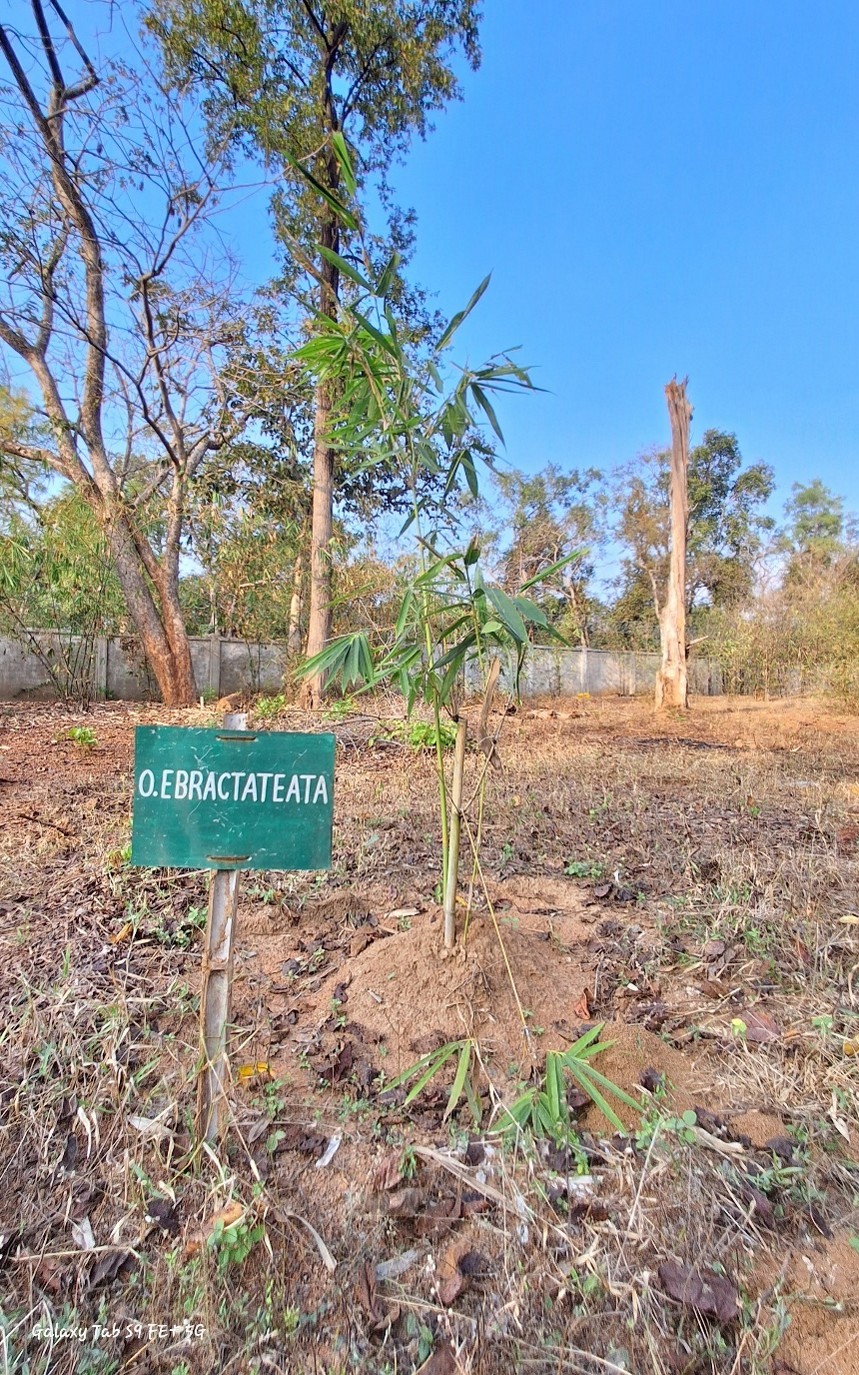Ochlandra ebracteata

Ochlandra ebracteata
Ochlandra ebracteata commonly known as Kachur in Hindi and Bengali, and Boro bans in Assamese, is a clumping bamboo species native to India, particularly in Assam, West Bengal, and parts of Bangladesh. It is typically found in moist tropical and subtropical forests, particularly in hilly and riverine areas, and can grow at altitudes ranging from 200 to 1,200 meters above sea level. The bamboo thrives in moist, loamy, well-drained soils, commonly found in areas with moderate rainfall, and can grow in both acidic and neutral soils.
This bamboo species has a moderate growth habit, with culms ranging from 4 to 7 meters in height and a diameter of 2 to 4 cm. The culms are greenish-yellow to light green, and the internodes are 20 to 25 cm in length. The culm sheaths are deciduous and greenish, with a smooth adaxial surface and a soft, hairy abaxial surface. The margins of the sheaths are ciliate.
The leaves of Ochlandra ebracteata are lanceolate to narrowly ovate in shape, with pointed tips. The leaves measure 15 to 25 cm in length and 2 to 4 cm in width, with a smooth to slightly rough surface.
The inflorescence of Ochlandra ebracteata consists of small, clustered panicles with limited branching. The flowering glumes are small and ovate, often glabrous, while the stamens are short and exserted, with glabrous anthers. The bamboo has a flowering cycle of 30 to 40 years, with flowering events reported in Assam, West Bengal, and parts of Bangladesh. Flowering is rare, and the bamboo produces small seeds with limited dispersal by wind. Seed germination requires moist soil for successful growth.
Ochlandra ebracteata is primarily propagated through vegetative methods, with culm cuttings being the most common method. Mature culms are cut and placed in soil to root, and clumps can be divided to propagate new plants. Seedling transplantation is also possible, although it is not widely used due to the rarity of flowering and seed production.
This bamboo species is widely used in construction, particularly in rural areas, for making walls, roofs, and other structures. It is also valued for crafting and furniture making, being used for baskets, mats, and furniture. The tender young shoots of Ochlandra ebracteata are edible and are consumed as a vegetable in various regions. Additionally, the bamboo is used in pulp and paper production.
In summary, Ochlandra ebracteata is a versatile bamboo species, important for construction, crafting, food, and paper production. It plays a key role in the rural economies of India and is used for a wide range of purposes, from building materials to edible shoots.
Listen Audio:
Need assistance? BRTC Faculty